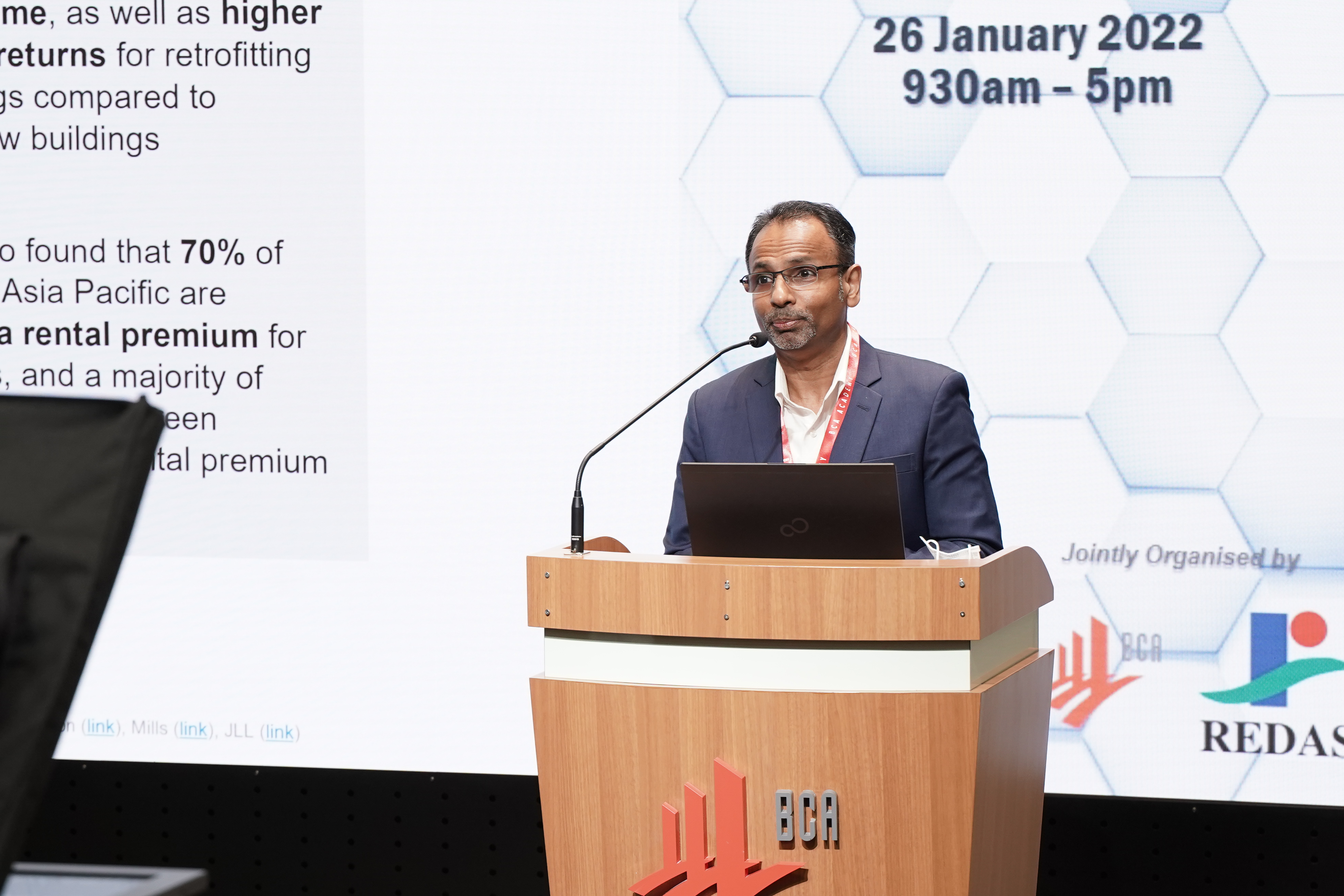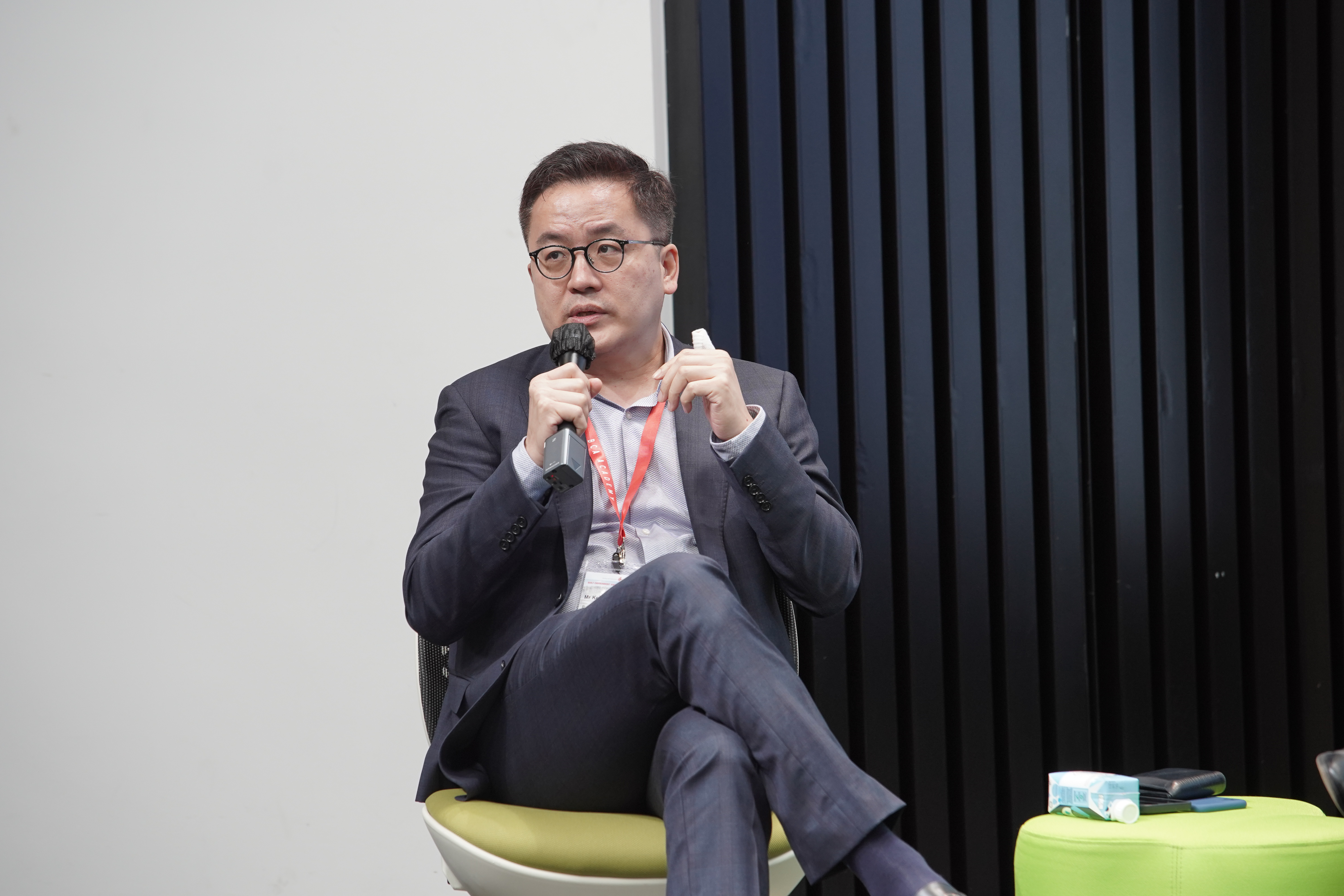After a “bruising battle” with COVID-19 in the past two years, there is now light at the end of a very long tunnel for the BE sector.
“We see encouraging signs in the sector’s recovery,” said Mr Tan Kiat How, Minister of State for National Development as well as Communications and Information, in his opening speech at the Built Environment and Property Prospects Seminar 2022.
The annual flagship seminar for the sector’s stakeholders to preview the year ahead, a hybrid event held at BCA Braddell Campus on January 26, offered promising prospects.
For Mr Tan, his optimism stems from improving nominal construction output that has almost reached pre-COVID-19 levels, indicating that construction works are progressing steadily while the inflow of foreign workers has also improved.
However, to seize opportunities on the horizon, the industry has to be like a band of chopsticks that becomes stronger with greater unity, said Mr Kelvin Wong, Building and Construction Authority (BCA) Chief Executive Officer.
“You can easily break one chopstick, but band a few together and it’s definitely harder to break them,” he added.
His other advice to BE companies is, to develop multi-disciplinary expertise and integrated services to capitalise on increased local demand and regional opportunities.
“From this pandemic, (we learnt that) companies that had a regional presence were more resilient,” he said.
BRIGHTENING LOCAL PROSPECTS
Even as the pandemic continues to cast a long shadow with the Omicron variant, things are clearly looking up for the BE sector.
Presenting the brighter prospects for 2022, Mr Teo Jing Siong, Group Director of BCA’s Strategic Planning and Transformation Office, shared that construction demand is projected to be higher.
It is expected to be between $27 billion and $32 billion, with the forecast’s upper bound 7 per cent higher than last year’s preliminary estimates.
Driving the majority of this demand are public sector projects that are likely to account for 60 per cent of the amount – at $16 billion to $19 billion. This is due to the Housing Development Board’s Build-to-Order units and infrastructural developments such as the Cross Island MRT Line and the Deep Tunnel Sewerage System, among others.
More importantly, this increased demand is expected to be sustained for the next few years, with BCA estimating that the figure will be between $25 billion and $32 billion annually from 2023 to 2026.
Singapore’s BE sector is also well-poised to seize the growth in the region.
GLOWING REGIONAL POSSIBILITES
Asia, the fastest-urbanising region in the world, is projected to have a compound annual growth rate of 8.9 per cent by 2023 in the Asian construction industry – a forecast that will be boosted by massive infrastructure projects.
“The opportunities in the region are large – the solutions all sit in Singapore,” said Mr Lavan Thiru, Executive Director at Infrastructure Asia, an organisation set up by Enterprise Singapore and Monetary Authority of Singapore to connect private investors with public infrastructure needs.
|
|

Mr Lavan Thiru, Executive Director at Infrastructure Asia shared on trends in infrastructure development of the region and potential opportunities for the built environment.
|
|
For instance, Singapore’s “very strong” ecosystem – ranging from planning, installation, financial to technical expertise – is able to address green demands in Indonesia and the Philippines.
This regional demand for infrastructure is also backed by recovery in Southeast Asian economies.
Ms Selena Ling, OCBC Chief Economist, noted how ASEAN 5, comprising Indonesia, Malaysia, Philippines, Singapore, Thailand, is set to buck the worldwide slowdown with growth picking up to over 5 per cent this year.
|
|
 Ms Selena Ling, OCBC Chief Economist, shared on the potential economic opportunities and challenges that the built environment sector needs to prepare for. Ms Selena Ling, OCBC Chief Economist, shared on the potential economic opportunities and challenges that the built environment sector needs to prepare for.
|
|
IGNITING TRANSFORMATION AND COLLABORATION
While local and regional opportunities are aplenty, businesses should continue to innovate with technology, digitalisation and collaboration to succeed in the post-COVID landscape.
Sharing his outlook for the year, Mr Wong, BCA’s CEO, said: “I am relatively bullish about the pipeline that is coming up, but I think the main fear I have is going back to the old ways of doing things.”
|
|
 Mr Kelvin Wong, BCA CEO, said businesses have to continue their transformation journey to prepare for the future. Mr Kelvin Wong, BCA CEO, said businesses have to continue their transformation journey to prepare for the future.
|
|
He noted three areas for businesses to progress. One, transform to improve productivity. Two, improve regulatory processes by using digital innovations such as CORENET X, a one-stop integrated regulatory system. Three, establish clearer benchmarks in aspects such as quality, maintainability and sustainability.
Mr Seah Chee Huang, CEO of DP Architects, agreed that the industry should pick up the pace on transformation efforts. “It’s very important we use this moment to continue to upgrade and upskill ourselves,” he noted.
Mr Wong also pushed for collaborative contracting arrangements, a redesign of the traditional contracting model to be less adversarial and siloed, bringing parties together towards common project goals.
“Globally, there are many markets that are using collaborative contracting and evidence demonstrates that it’s good for business,” he noted.
Such a model may just provide the impetus for the BE sector to show greater unity and achieve greater things together.
Mr Liam Wee Sin, Group Chief Executive of property developer UOL Group, echoed his support for such an aggregated delivery approach and voiced his aspirations for the sector.
“If you look at our Built Environment in Singapore, it’s world-class, thanks to good planning, building design, contracting, facilities management and so on. Therein lies a lot of potential… I see a lot of prospects there,” he said.
More details on the construction demand forecast can be found here. Read more on how others in the built environment sector have transformed their business practices, collaborated with stakeholders, and adopted new technologies to emerge stronger.